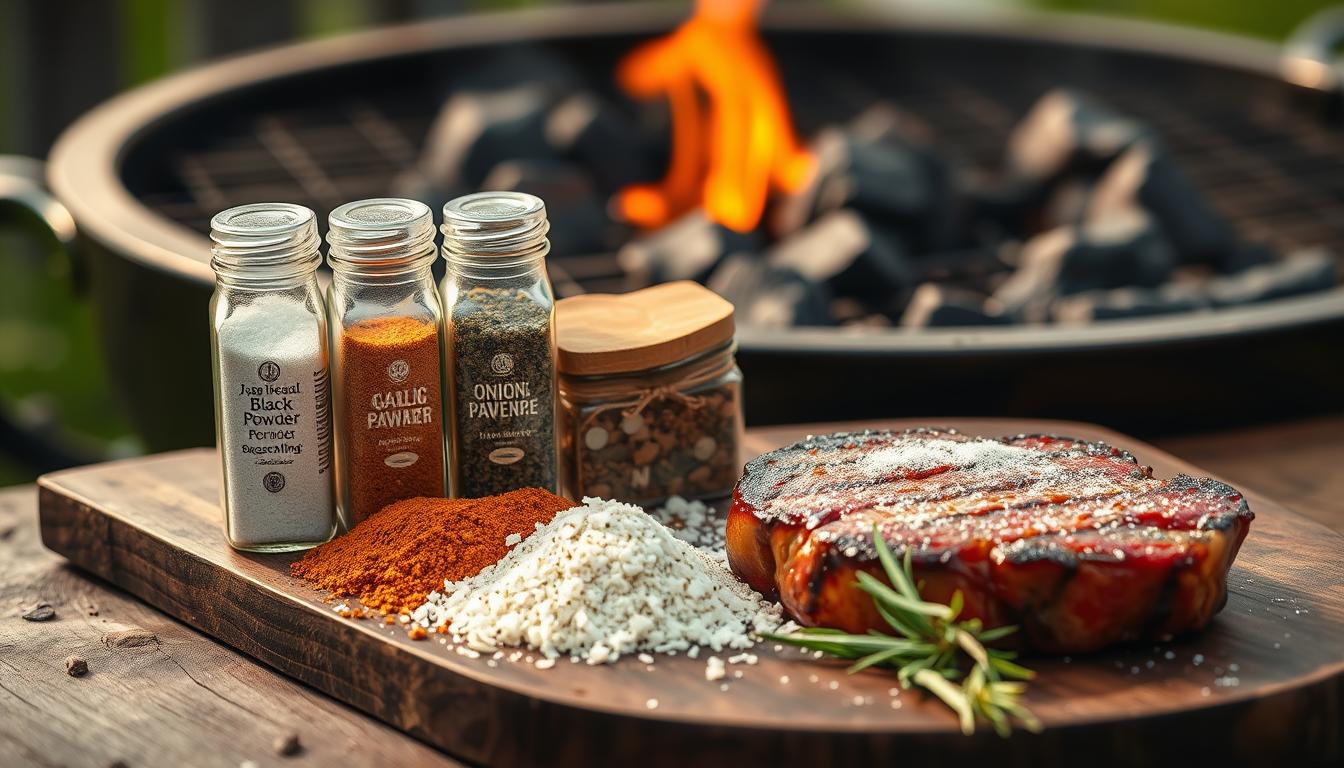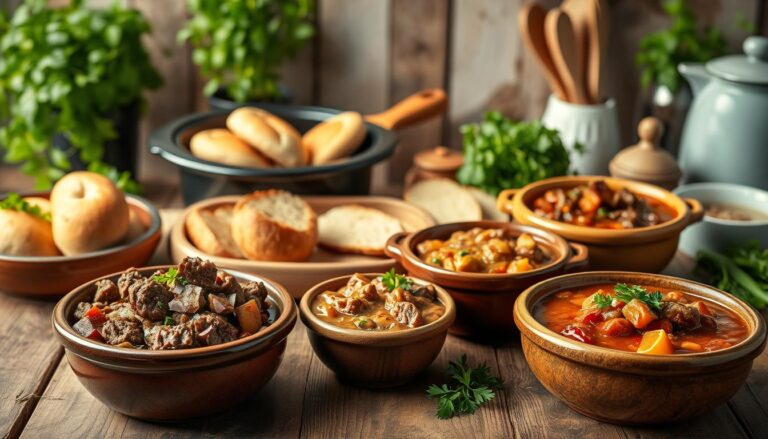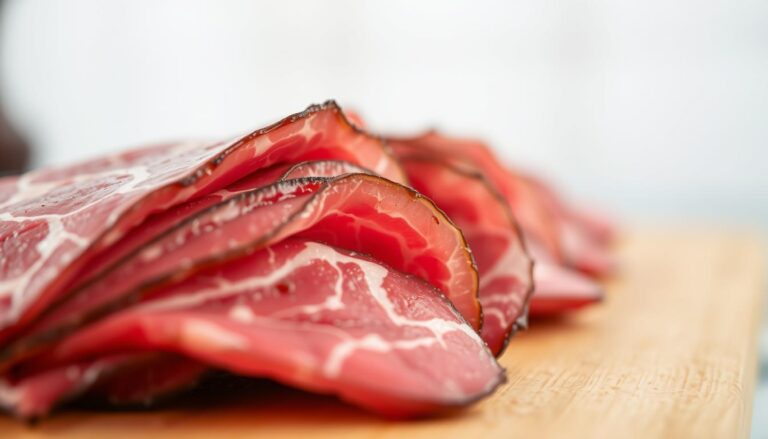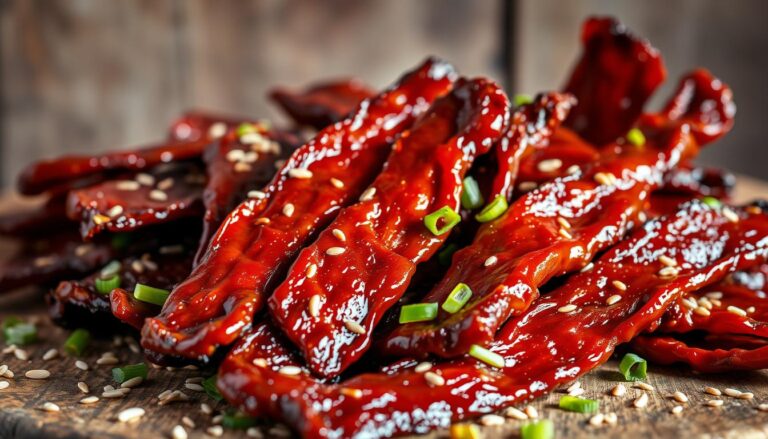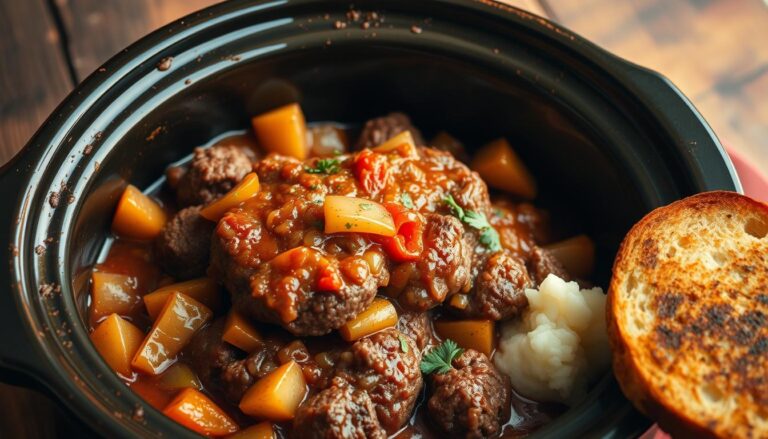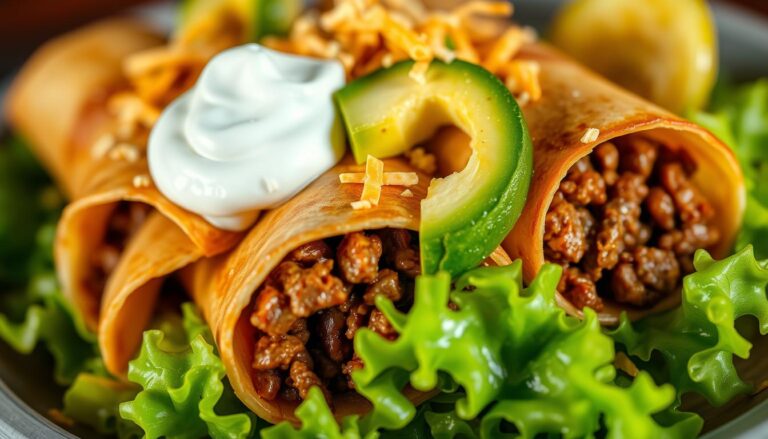Best Seasoning for Steak: Unlock the Secret to Grilling Like a Pro!
Imagine you’ve spent hours getting ready, lighting the grill, and waiting for the perfect sear. Then, the first bite is dry, bland, or lacks that “wow” factor. This is a common problem for many grill masters. But, what if the solution was as simple as the seasoning?
The best seasoning for steak is more than just a sprinkle of salt. It’s the key to turning an ordinary meal into a feast fit for a steakhouse. Whether you’re grilling for family or impressing friends, the right seasoning can make the meat taste richer and create a crispy crust.
Imagine a perfectly charred ribeye, its surface glistening with herb butter. The air is filled with the scent of rosemary and garlic. The secret is in balancing flavors that enhance, not overpower.
Seasoning is not just about taste; it’s science. From the first sprinkle of coarse salt to the final rest after cooking, every step is crucial. This guide will show you how to master seasoning, making your next steak dinner unforgettable.
Table of Contents
Why Seasoning Matters for Steak
Choosing the best seasoning for steak is more than just taste. It’s a science that changes your meal. The right mix can improve flavor, texture, and smell. Let’s see how.
Enhancing Flavor with the Right Seasoning
Seasoning makes a steak’s taste better. Kosher salt pulls moisture to the surface, creating a tasty crust when grilled. This crust keeps juices in and adds smoky flavor.
For steak seasoning ideas, start with salt and pepper or try garlic-and-herb rubs. Remember, use 1 tbsp of seasoning per pound. Let it sit for 40 minutes before cooking to soak up more flavor.
The Role of Seasoning in Tenderizing Meat
Acids in marinades, like lemon juice or vinegar, and enzymes in pineapple or ginger, break down meat. A 1-2 hour marinade can make tougher cuts like flank steak softer.
Even dry rubs with brown sugar or paprika can make meat tender. They create a flavorful crust on the outside.
| Seasoning Method | Key Ingredients | Best For |
|---|---|---|
| Salt & Pepper | Kosher salt, freshly ground black pepper | Simple flavor foundation |
| Cajun Rub | Paprika, cayenne, garlic powder | Spicy kick for tender cuts |
| Asian Marinade | Soy sauce, ginger, brown sugar | Flank or skirt steak |
Always season all sides and let the steak rest 3-5 minutes after cooking. This helps keep juices in. Try these methods to find your top steak seasoning ideas.
Popular Types of Steak Seasonings
Steak seasoning mixes and blends offer endless options to boost your steak’s taste. Let’s dive into the top styles to take your grilling to the next level.
Classic Steak Seasoning Combinations
Blends like Montreal and garlic-herb are always in demand. Jack Daniel’s Steak Seasoning (8/10) brings a strong garlic kick. Badia’s Canadian Blend (8.5/10) adds caraway and coriander for a rich flavor.
For a homemade touch, try these:
- All-Purpose Rub: Salt, pepper, garlic powder, onion powder
- Chili Rub: Smoked paprika, chili powder, cumin
- Coffee-Infused Mix: Coffee grounds, ancho chile, brown sugar
Regional Varieties of Steak Seasoning
Global traditions bring unique steak flavors. Here’s how different cultures season their steaks:
| Region | Blend | Key Ingredients |
|---|---|---|
| Argentina | Chimichurri | Parsley, garlic, vinegar |
| Texas | Texan Rub | Smoked paprika, brown sugar, chili powder |
| Mediterranean | Herbs de Provence | Thyme, rosemary, lavender |
| Korea | Kalbi | Soy sauce, sesame oil, garlic |
Try these blends with your steak cut. Smoky rubs are great for ribeye, while spicy mixes are perfect for lean cuts like flank steak. Whether you pick Kinder’s The Steak Blend (9/10) or make your own, the right seasoning makes every bite special.
Essential Ingredients for Steak Seasoning
Every great steak seasoning blend starts with core ingredients. These ingredients enhance flavor without hiding the meat’s natural taste. Mastering these essentials makes your seasoning the best for steak, balancing boldness and balance.
SSalt: The Foundation of Flavor
Kosher salt’s coarse texture evenly penetrates meat, making it perfect for dry rubs. Use 2 tablespoons of coarse salt as the base for most seasoning blends for steak. Sea salt adds mineral-rich crystals, while table salt’s fine grains work best in liquid marinades. Apply a generous layer 45 minutes before cooking to draw out moisture and enhance tenderness.
- Coarse kosher salt: Even seasoning without oversalting
- Sea salt: Adds mineral depth to premium cuts
- Table salt: Use sparingly in marinades for fine texture
Peppered Perfection: Choosing the Right Pepper
Pepper’s heat and aroma depend on its type. Black peppercorns deliver bold heat for hearty cuts like ribeye. White pepper blends seamlessly into delicate filets, while pink peppercorns add floral notes to premium steaks. Grind fresh peppercorns just before mixing for maximum aroma.
- Black pepper: Bold heat for thick cuts
- White pepper: Subtle heat for light-colored meats
- Pink pepper: Floral accents for high-end steaks
Herbs and Spices to Elevate Your Steak
Herbs choices determine your seasoning’s personality. Rosemary and thyme infuse aroma during grilling, while smoked paprika adds smoky depth. Garlic and onion powder deliver concentrated flavor without excess moisture. Combine 1 teaspoon of dried rosemary with 2 tablespoons of paprika for a classic blend.
- Rosemary/thyme: Aromatic choices for direct heat contact
- Paprika: Sweet or smoked varieties for visual contrast
- Garlic powder: Umami-rich without adding liquid
Homemade Steak Seasoning Recipes
Discover restaurant-quality flavors with these homemade steak seasoning recipes. They’re perfect for any steak type. You can adjust the heat, herbs, and spices to your liking.
Simple All-Purpose Steak Rub
Begin with this versatile mix for ribeyes, sirloins, and more:
| Ingredient | Amount |
|---|---|
| Sea salt flakes | 2 tbsp |
| Onion powder | 1 tbsp |
| Cracked black pepper | 1 tbsp |
| Garlic powder | 2 tsp |
Mix the ingredients in a mortar or crush them in a bag. Store in an airtight jar for up to a year. For more flavor, add cayenne, smoked paprika, or rosemary. Let the seasoned meat rest for 30 minutes before cooking.
Bold Marinade for Grilling Enthusiasts
Make a zesty marinade with:
- ¼ cup olive oil
- 3 tbsp soy sauce
- 2 minced garlic cloves
- 1 tbsp honey
- 1 tsp smoked paprika
For extra kick, add ½ tsp red pepper flakes or fresh lime juice. Marinate in a ziplock bag in the fridge:
| Cut | Time |
|---|---|
| Skirt/Flank | 2-4 hours |
| Top Sirloin | 8 hours |
Tip: Discard used marinade or boil it before using as sauce. Homemade blends beat expensive restaurant versions, especially for tougher cuts like tri-tip. Always pat the meat dry before grilling after marinating.
Store-Bought Options: What to Look For
Choosing the right store-bought seasoning can save time without losing flavor. Here’s how to pick the best seasoning for steak that fits your taste and cooking style.
Top Brands for Premium Steak Seasoning
- Kinder’s The Steak Blend: It mixes garlic, onion, and brown sugar for a balanced top seasoning for steak. It’s great for ribeye or sirloin and has a 4.9-star rating.
- Montreal Steak Seasoning: This coarse blend of pepper, paprika, and herbs makes a crispy crust on ribeye or t-bone cuts.
- Badia Canadian Blend: Its unique caraway and coriander notes are perfect for tender cuts like porterhouse.
- Jack Daniel’s Steak Seasoning: Its bold garlic and heat are great for flank or skirt steak.
How to Choose the Best Store-Bought Seasoning
Look for blends with few additives. Avoid those high in sodium or artificial flavors. Check labels for top seasoning for steak mixes with herbs like rosemary or thyme.
For dry rubs, coarse textures work best. For marinades, finer blends are better. Match the seasoning’s intensity to your steak’s richness. Milder cuts like filet mignon need subtle flavors, while bold cuts like flank steak handle strong spices.
Pro tip: Shake the container before using to ensure even spice distribution. Store in a cool, dark place to keep it fresh.
Pairing Seasoning with Steak Cuts
Choosing the right seasoning for steak depends on the cut’s texture and fat. Lean cuts need acidity to tenderize. Marbled steaks do well with bold spices. Here’s how to match flavors to your meat for the best taste.
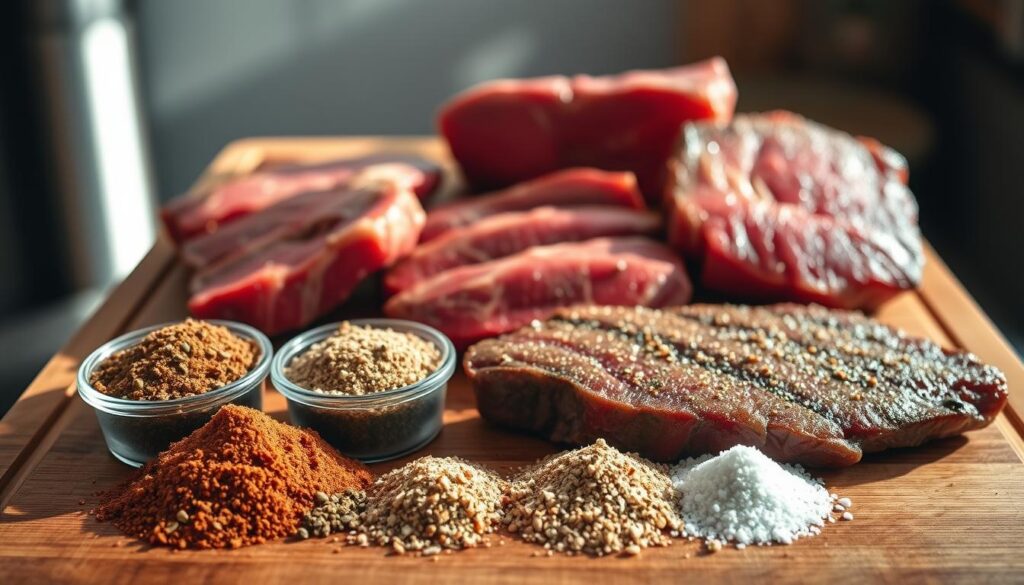
Best Seasoning for Ribeye and Porterhouse
Ribeye and porterhouse cuts are rich in marbling. They pair well with smoky or coffee-infused seasonings. For a classic taste, mix Montreal Steak Seasoning (2 tbsp salt, 2 tbsp black pepper, paprika, garlic, and brown sugar).
For deeper flavors, try the Coffee Steak Seasoning. Blend cocoa powder, chili, smoked paprika, and cumin. These seasonings enhance the meat’s natural juices without overpowering it.
- Montreal rub: Combines 2 Tbsp kosher salt, 2 Tbsp black pepper, 1 Tbsp paprika, 1 tsp garlic powder, 1 Tbsp brown sugar.
- Coffee rub: 1 tsp cocoa powder + 1 tsp chili powder + 1 tsp smoked paprika + 1 tsp cumin + optional cayenne.
Recommendations for Flank and Skirt Steak
Flank and skirt steak benefit from acidic marinades. The Carne Asada blend (chili powder, lime, cilantro) adds brightness. For umami depth, try an Asian-inspired rub with soy sauce, ginger, and sesame seeds.
- Carne Asada marinade: Lime juice, fresh cilantro, 2 tbsp chili powder, 1 tbsp ancho chile, cumin, garlic, and 1 tsp salt.
- Asian rub: Soy sauce, sesame oil, minced ginger, sesame seeds, and 1 tsp black pepper.
Grilling Tips for Seasoned Steaks
Getting the timing and technique right is key to great flavor. Follow these steps to make sure your steak is juicy and tastes amazing.
When to Apply Seasoning for Optimal Flavor
Put dry steak seasonings for grilling on 30 minutes to an hour before you grill. This lets salt soak into the meat. For the best seasoning for steak, rub it all over and press it in. Steaks in marinades need at least 30 minutes, with tougher cuts needing longer:
- Thin cuts: 30 minutes for rubs, 1-2 hours for marinades
- Thick cuts: 1 hour dry rub or overnight marinating
- Follow Chef K.C. Gulbro’s method: Salt steaks 30–60 minutes pre-grilling for balanced seasoning
The Importance of Resting Your Steak After Grilling
Let your steak rest for 5–10 minutes after grilling. This keeps the juices in and prevents it from drying out. Here are some important rules:
- Rest 5 minutes for thin cuts (under 1.5 inches)
- Rest 10 minutes for thicker cuts (over 1.5 inches)
- Cover loosely with foil if needed, but avoid tenting for more than 2 minutes
Skipping this step can lose 30% of the juices. Resting ensures every bite is moist and full of flavor.
Common Mistakes with Steak Seasoning
“A seasoned chef once said, ‘The key to perfect seasoning is balance—neither too much nor too little.’
Steak seasoning often goes wrong because of extremes. Too much salt can overpower the meat’s taste. Too little leaves it tasteless. Begin with a light dusting of your favorite seasoning blends for steak.
Then, taste a small piece before cooking. Adjust as needed—salt can’t be taken out once it’s absorbed. But underseasoned meat can be saved with a quick sprinkle mid-cook.
Overseasoning vs. Underseasoning
Start with a small amount of seasoning. A 1-teaspoon blend per pound is a good starting point. Too much seasoning? Rinse off excess salt or balance it with acidic sauces like lemon or vinegar.
Underseasoned? Add more seasoning before flipping or serve with a zesty garnish. Being patient ensures your seasoning blends for steak enhance, not overpower.
Ignoring Marinating Times
Marinate wisely. Tender cuts like ribeye need just 15 minutes to 2 hours. Tougher cuts (flank, skirt) require 4–24 hours. Marinating too long can make meat spongy.
Always marinate in a glass or plastic container. Boil leftover marinade before using it as sauce.
- Tender cuts (ribeye, strip): 15 mins–2 hours
- Tough cuts (flank, skirt): 4–24 hours
- Acidic marinades over 24 hours risk mushy texture
Adjust based on cut type. A well-balanced steak seasoning ideas starts with timing and restraint. Your steak deserves neither a flavorless bite nor a salt bomb—find the middle ground.
Experimenting with Unique Flavor Profiles
Try new steak seasoning ideas to spice up your grilling. Explore flavors from around the world. These bold seasoning blends for steak turn a simple steak into a journey.
Using International Spices for a Global Twist
Here are some global-inspired blends:
- Middle Eastern Baharat: Mix cinnamon, allspice, and sumac for a warm, aromatic rub on lamb or flank steak.
- Japanese Togarashi: Blend red pepper flakes, orange peel, and sesame seeds for a tangy kick on thin cuts like sirloin.
- Indian Garam Masala: Combine cardamom, cumin, and cloves for rich, layered flavor on thick cuts like ribeye.
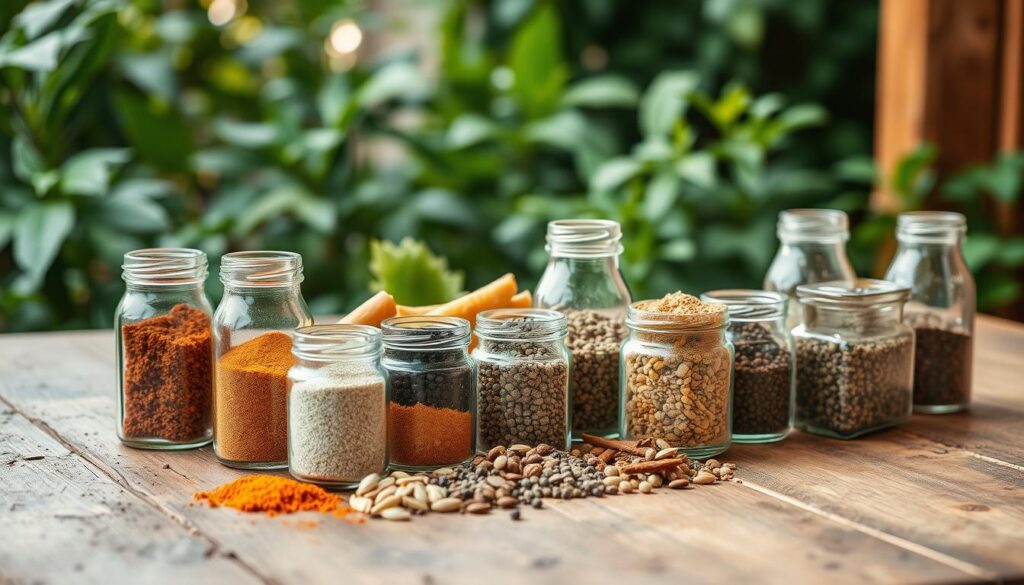
Sweet vs. Savory: Finding Your Flavor Balance
Balance sweetness with heat using ratios like 1:1 sugar to smoked paprika. Try these combinations:
- Spicy Cocoa Rub: 1 tsp cocoa powder + ½ tsp chili powder for a smoky-sweet contrast.
- Savoury Coffee Rub: ½ tsp ground coffee + ½ tsp raw sugar for a deep, earthy finish.
“Kinder’s Buttery Steakhouse Rub creates a velvety richness that works magic on ribeye. The caramelized butter notes make every bite unforgettable.”
Begin with small batches of steak seasoning ideas and adjust to taste. Let your creativity shine at your next grilling session. Your taste buds will love it.
The Science Behind Steak Seasoning
Learning the best seasoning for steak means knowing how ingredients work with meat. Salt pulls moisture from meat, then brings it back, making it tender and flavorful. When meat hits 285°F+, it starts a chemical reaction that creates new tastes.
Understanding Flavor Interaction
Herbs and spices don’t just sit there; they react. Salt breaks down proteins, and sugar caramelizes to create a golden crust. This chemical reaction happens in three stages:
- Amadori compounds form at lower temps.
- Aromas develop as proteins and sugars bond.
- Brown hues emerge when compounds polymerize.
How Seasoning Affects Cooking Times
Sugar in steak seasoning mixes helps brown the steak faster, but timing is key. Salt pulls moisture out, so thicker steaks might need a special cooking method. USDA says medium-rare is 135°F, but seasonings can change that:
- Sugar boosts crust formation but risks burning.
- Acidic marinades tenderize but shorten resting time.
- Salt’s 40-minute penetration window ensures even flavor.
Using tools like the Typhur InstaProbe helps track temperatures accurately. This balances the effects of seasoning. Whether you use a dry rub or a wet marinade, science and flavor come together.
Seasonal and Fresh Ingredients in Seasoning
Discover new flavors by using fresh ingredients in your steak rub recipes. Fresh herbs and spices give your homemade seasoning a bold, vibrant taste. Old spices can make your dish taste flat. Here’s how to keep your seasoning fresh and seasonal.
Why Fresh Spices Matter for Steak Flavor
Whole spices like coriander or black peppercorns smell better when freshly ground. Keep them in airtight containers, away from light, to keep them potent. For the best homemade steak seasoning, grind whole spices right before mixing. Use spices that are less than six months old for the best taste.
- Replace pre-ground spices with whole seeds for brighter flavor
- Check spice jars for expiration dates before blending
- Grind peppercorns directly onto steak before grilling
Using Seasonal Ingredients for Unique Touches
Change up your steak rub recipes with seasonal ingredients:
- Spring: Tarragon and lemon zest in a bright herb rub
- Summer: Smoked paprika with chili flakes for smoky heat
- Fall: Cinnamon and maple syrup in a sweet-spiced coating
- Winter: Rosemary with garlic for hearty flavor
Use seasonal produce like roasted garlic in autumn or fresh thyme in spring for a modern twist. Chefs say to update your spice rack every three months to match the seasons. For example, Badia’s Canadian blend uses caraway in winter, while summer versions often have citrus zest.
Conclusion: Your Path to the Perfect Steak
Mastering steak seasoning turns your grill into a flavor stage. Let’s go over the key points to make every bite perfect.
Recap of Key Points
Choosing the right steak seasonings for grilling begins with matching flavors to your steak’s cut and texture. Use a meat thermometer to check for the right temperature. For medium-rare, aim for 125°F, and for medium, 135°F.
Let steaks rest for 5–10 minutes after cooking to keep juices in. High-quality ingredients like fresh herbs and quality salt are crucial. Avoid pre-mixed blends with fillers. Top brands like Butcher BBQ offer award-winning rubs for consistent flavor.
Encouragement to Explore and Experiment
Don’t just stick to standard blends—try steak rub recipes with sweet and savory flavors. Begin with a garlic-pepper rub for ribeye or a smoky blend for flank steak. Adjust salt levels based on your cut’s marbling.
Keep track of your favorites in a cooking journal. Note which spices work best with specific grilling times. Even a 30-minute rest at room temperature before cooking can improve results.
Start by swapping store-bought seasonings for a homemade mix using this guide. Whether you stick to proven methods or create your own, each step enhances your skill. Perfect grilling is a mix of science (like 450°F grill temps) and creativity. Your next steak dinner is a chance to improve your technique—start small, taste often, and let your palate guide you.

